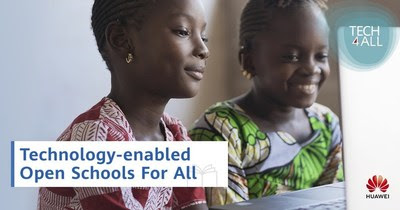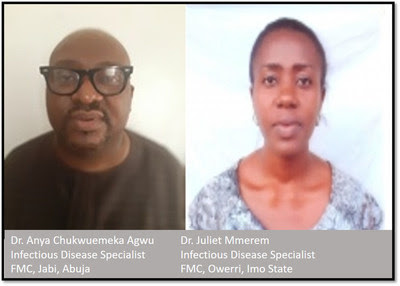Estão em curso estudos in vitro adicionais com vista à determinação da atividade de neutralização do ADG20 contra a variante Omicron
Submissões do Pedido de utilização de emergência do ADG20 planeadas para a prevenção e tratamento da COVID-19 em meados de 2022
Mantém-se o reforço do stock em antecipação do Pedido de utilização de emergência no segundo semestre de 2022, estando 4 milhões de doses disponíveis para distribuição nos próximos dois anos
WALTHAM, Mass., Nov. 30, 2021 (GLOBE NEWSWIRE) — A Adagio Therapeutics, Inc., (Nasdaq: ADGI), uma empresa biofarmacêutica de fase clínica, focada na descoberta, desenvolvimento e comercialização de soluções à base de anticorpos para doenças infecciosas com potencial pandémico, forneceu hoje informações sobre o potencial de o ADG20, o seu principal anticorpo contra o SARS CoV-2, abordar também a variante Ómicron do SARS-CoV-2 e outras variantes de preocupação. O ADG20 é um candidato a produto investigacional de anticorpos monoclonais (mAb) concebido para providenciar uma ampla e potente atividade de neutralização contra o SARS-CoV-2, incluindo variantes de preocupação, com vista à prevenção e tratamento da COVID-19, com uma potencial duração da proteção de até um ano, numa só injeção.
“A escala global contínua da pandemia de COVID-19 tem originado níveis cada vez maiores de pressão ao nível da imunidade ao vírus, dando origem ao surgimento de variantes que contêm mutações associadas ao escape das classes comuns de anticorpos neutralizantes induzidos pelas infeções naturais ou pela vacinação. Ao contrário do que acontece com a maioria dos anticorpos atualmente disponíveis no âmbito dos Pedidos de utilização de emergência, o ADG20 demonstrou estar direcionado a um epítopo altamente conservado entre o grupo monofilético (“clade”) I dos Sarbecovirus e que não é prontamente visado pela resposta neutralizante endógena dos anticorpos,” referiu Laura Walker, Ph.D., co-fundadora e principal investigadora científica da Adagio. “Graças à natureza altamente conservada e imunorrecessiva do epítopo reconhecido pelo ADG20, esperamos que este retenha a atividade contra a variante Ómicron, conforme observado nos modelos in vitro com outras variantes de preocupação anteriormente identificadas. Além disso, nenhuma das mutações presentes na proteína de pico (ou “spike”) da variante Ómicron foi associada a um escape da neutralização do ADG20. O ADG20 foi desenvolvido para providenciar uma potente e vasta atividade de neutralização em antecipação da rápida evolução antigénica do SARS-CoV-2 e do surgimento de vírus semelhantes ao SARS com potencial pandémico no futuro.”
“O ADG20 foi desenvolvido, de forma excecional, para combinar alcance, potência e duração de proteção contra o SARS-CoV-2 durante até um ano, com uma só injeção. Fizemo-lo antecipando o facto de o SARS-CoV-2 continuar a evoluir e, potencialmente, a tornar algumas das terapêuticas e vacinas iniciais obsoletas,” referiu Tillman Gerngross, Ph.D., co-fundador e Presidente da Comissão Executiva da Adagio. “Os nossos ensaios clínicos a nível global estão a avançar, com potenciais submissões de Pedido de utilização de emergência em meados de 2022 para a prevenção e tratamento da COVID-19. Continuamos a colaborar com a FDA e outras entidades reguladoras e agências governamentais na discussão de uma potencial aceleração dos planos de desenvolvimento e da necessidade de um portefólio de soluções terapêuticas para o combate da pandemia de COVID-19.”
Tendo em conta a significativa potencial crise sanitária resultante do surgimento da variante Ómicron, a Adagio está levar a cabo um conjunto de atividades de apoio à utilidade do ADG20, abordando esta variante de preocupação recentemente identificada, incluindo:
- a condução de estudos in vitro a fim de avaliar a atividade de ligação e neutralização expectáveis do ADG20 contra a variante Ómicron. Antecipamos a disponibilização dos dados iniciais destes estudos no final do ano; e
- o recrutamento de doentes para o ensaio de tratamento da COVID-19 de Fase II/III realizado pela Adagio (conhecido por “STAMP”), em diversas clínicas na África do Sul, a par de esforços relacionados com ensaios clínicos em curso em todo o mundo, numa tentativa de gerar dados clínicos para o ADG20 contra infeções causadas pela variante Ómicron.
Com base nos dados gerados, a Adagio planeia colaborar com as autoridades de saúde e agências governamentais por forma a acelerar o desenvolvimento e fornecimento do ADG20 e apoiar o combate do SARS-CoV-2 e suas variantes de preocupação.
O ADG20 e as variantes de preocupação
A resposta dos anticorpos neutralizantes induzida pela infeção por SARS-CoV-2 e pela vacinação é dominada por três classes de anticorpos direcionados ao domínio de ligação ao recetor (RBD) (Classe 1, Classe 2 e Classe 3), que, muitas vezes, partilham mutações de escape comuns. A variante Ómicron (B.1.1.529) recentemente identificada na África do Sul contém mutações associadas à resistência a uma grande proporção destes anticorpos comummente desencadeados, o que pode ser explicado pela pressão imune nestes pontos antigénicos. Os dados sobre a maioria dos anticorpos disponíveis no âmbito do Pedido de utilização de emergência ou no desenvolvimento clínico em fase tardia, mostram que estes visam uma destas três regiões antigénicas dominantes dentro do RBD.
Os estudos in vitro demonstraram que o ADG20 se liga a um epítopo altamente conservado dentro do RBD que não é visado por nenhuma das classes comuns dos anticorpos neutralizantes induzidas pela infeção por SARS-CoV-2 e pela vacinação. Assim sendo, ao contrário do que acontece com muitos outros anticorpos em fase clínica (isolados de doentes com COVID-19 e que reconhecem epítopos também visados por anticorpos neutralizantes endógenos) existe uma pressão imune limitada sobre o local da ligação do ADG20. O epítopo do ADG20 manteve-se conservado em 99,99% das cerca de 4 milhões de sequências virais de SARS-CoV-2 completas depositadas na base de dados GISAID (à data de 15 de outubro de 2021) e, conforme demonstrado nos estudos in vitro, o ADG20 retém atividade contra as variantes de preocupação anteriores, como a Alfa, Beta, Delta e Gama. Relativamente à variante Ómicron, nenhuma das mutações presentes na proteína de pico (“spike”) está associada a um escape da neutralização do ADG20. Com base no mapeamento de epítopos e estudos estruturais publicados, a Adagio prevê que o ADG20 irá manter uma atividade neutralizante contra a variante Ómicron, enquanto outros produtos de anticorpos monoclonais (mAb) poderão perder uma atividade substancial contra esta variante.
Os dados in vitro anteriormente divulgados demonstraram a manutenção da atividade neutralizante por parte do ADG20 contra um conjunto variado de variantes de SARS-CoV-2 em circulação, incluindo as variantes recentemente identificadas Lambda, Mu e Delta plus. Em especial, as conclusões destes estudos in vitro indicaram que o ADG20 demonstrou uma potente atividade neutralizante contra todas as variantes de preocupação de SARS-CoV-2 testadas, incluindo aquelas com uma suscetibilidade reduzida a produtos de anticorpos monoclonais (mAb) atualmente disponíveis no âmbito de Pedido de utilização de emergência ou em fase final do seu desenvolvimento.
Sobre o ADG20
O ADG20, um anticorpo monoclonal investigacional direcionado à proteína de pico (“spike”) do SARS-CoV-2 e coronavírus relacionados, está a avançar nas fases de ensaios clínicos a nível global, para a prevenção e tratamento da COVID-19, a doença causada pelo SARS-CoV-2. O ADG20 foi concebido e desenvolvido para apresentar uma elevada potência e providenciar uma vasta atividade de neutralização contra o SARS-CoV-2 e outros Sarbecovirus de grupo monofilético (“clade”) I, visando um epítopo altamente conservado no domínio de ligação ao recetor. O ADG20 foi adicionalmente manipulado para providenciar uma semivida alargada, para uma proteção prolongada. Em estudos pré-clínicos, o ADG20 demonstrou uma potente atividade de neutralização contra o vírus SARS-CoV-2 original, contra as variantes de preocupação do SARS-CoV-2 Alfa, Beta, Delta e Gama, contra outras variantes do SARS-CoV-2 até à data identificadas e contra outros vírus idênticos ao SARS. Nos ensaios clínicos, o ADG20 é administrado através de uma única injeção intramuscular. Até à data, o ADG20 foi bem tolerado no ensaio de Fase I, sem registo de sinais de alerta em termos de segurança ao longo de um período mínimo de três meses de acompanhamento em todos os coortes. O ADG20 não foi aprovado para utilização em qualquer país, e a segurança e eficácia ainda não foram estabelecidas.
Sobre a Adagio Therapeutics
Adagio (Nasdaq: ADGI), uma empresa biofarmacêutica em fase clínica, focada na descoberta, desenvolvimento e comercialização de soluções à base de anticorpos para doenças infecciosas com potencial pandémico, incluindo a COVID-19 e influenza. O portefólio de anticorpos da empresa foi otimizado pela utilização das tecnologias de engenharia da Adimab, líderes do setor, e foi pensado para providenciar aos doentes e profissionais de saúde o potencial de uma poderosa combinação de potência, abrangência, proteção duradoura (através da extensão da semivida), capacidade de produção e acessibilidade. O portefólio de anticorpos contra o SARS-CoV-2 da Adagio inclui múltiplos anticorpos não concorrentes e amplamente neutralizantes, com diferentes epítopos de ligação, liderados pelo ADG20. A Adagio assegurou uma capacidade de fabrico do ADG20 junto de fabricantes externos, de forma a apoiar a conclusão dos ensaios clínicos e a fase inicial do lançamento comercial, garantindo a potencial acessibilidade a pessoas de todo o mundo. Para mais informações, visite www.adagiotx.com.
Declarações prospetivas (relativas ao futuro)
O presente comunicado de imprensa contém declarações prospetivas (relativas ao futuro) conforme definidas na lei “Private Securities Litigation Reform Act” de 1995. Termos como “antecipa”, “crê”, “espera”, “pretende”, “prevê” e “futuro” ou outras expressões semelhantes, devem ser identificadas como “declarações prospetivas (relativas ao futuro)”. As declarações prospetivas incluem declarações relativas, entre outras coisas, ao calendário, progresso e resultados dos nossos estudos pré-clínicos e ensaios clínicos do ADG20, incluindo o calendário das nossas submissões de Pedido de utilização de emergência planeados, o início, modificação e conclusão dos estudos ou ensaios e trabalhos preparatórios relacionados, o período durante o qual os resultados dos ensaios ficarão disponíveis e os nossos programas de investigação e desenvolvimento; a atividade neutralizante esperada do ADG20 contra a variante Ómicron; a nossa capacidade de obter e manter aprovações regulamentares para, os nossos candidatos a produtos; a nossa capacidade de identificar doentes, incluindo em populações específicas, com as doenças tratadas pelos nossos candidatos a produtos e de inscrever tais doentes nos nossos ensaios clínicos; as nossas expectativas relativamente ao âmbito de qualquer indicação aprovada para o ADG20; e o perfil de risco/benefício dos nossos candidatos a produtos para os doentes; as nossas capacidades e estratégia de fabrico, incluindo planos para doses disponíveis num futuro próximo; e a nossa capacidade de comercializar com sucesso os nossos candidatos a produtos. Podemos não alcançar os planos, intenções ou expectativas revelados nas nossas declarações prospetivas, pelo que não deve depositar uma confiança indevida nas mesmas. Estas declarações prospetivas envolvem riscos e incertezas que podem fazer com que os resultados reais difiram materialmente dos resultados descritos ou implícitos nas declarações prospetivas, incluindo, sem quaisquer limitações, os impactos da pandemia de COVID-19 no nosso negócio, ensaios clínicos e posição financeira, dados de segurança ou eficácia inesperados observados durante os estudos pré-clínicos ou ensaios clínicos, taxas de ativação ou inscrição nos centros de ensaios clínicos inferiores às esperadas, alterações na concorrência esperada ou existente, alterações no ambiente regulatório, e as incertezas e calendário do processo de aprovação regulatório. Outros fatores que podem fazer com que os nossos resultados reais difiram materialmente daqueles expressos ou implícitos nas declarações prospetivas deste comunicado de imprensa são descritos sob o título “Fatores de Risco” no Relatório Trimestral do Formulário 10-Q da Adagio para o trimestre terminado a 30 de junho de 2021 e nos futuros relatórios da Adagio a serem apresentados à SEC, incluindo o Relatório Trimestral do Formulário 10-Q da Adagio para o trimestre terminado a 30 de setembro de 2021. Tais riscos podem ser amplificados pelo impacto da pandemia de COVID-19. As declarações prospetivas contidas neste comunicado de imprensa são as vigentes à data, e a Adagio não se obriga a atualizar tais informações, exceto se exigido pela lei aplicável.
Contactos:
Contacto para comunicação social:
Dan Budwick, 1AB
Dan@1abmedia.com
Contacto para investidores:
Monique Allaire, THRUST Strategic Communications
monique@thrustsc.com





